I am posting this today, almost one year later than I promised čika Idris that I would disseminate online the Hujdurović brothers’s Open Letters to the Citizens of Bosnia-Herzegovina. Today it’s 21 years since the day that Srebrenica fell, and the day when we commemorate genocide in Srebrenica and in Bosnia. People sometimes speak about lessons from the past, but we don’t learn lessons from the past by merely engaging in commemorative practices, symbolic per nature, and, in the case of Bosnia-Herzegovina, highly politicised and for that reason prone to abuse by nationalists who thrive on keeping people stuck in a past of extreme violence, and here I mean both Serb and Bosniak nationalists.
I have been to Srebrenica a number of times, including three times for the Annual Commemoration and collective burial in Potočari. Of everything good and bad that I’ve observed there, one image always stands out in my mind: that of a little girl with a t-shirt saying ‘Lucky Girl’.

At the time I wrote: “The beautiful girl, and all the other children I got the chance to meet in my trips around former Yugoslavia are what gives my work a purpose. She means that the past is important, but that it is the future that really matters.” Well, the girl is now 14, and her future has been systematically undermined by nationalists, some of whom killed her family, while others thrive on her family’s victimhood.
With her in my mind, and many other young people that I met during the last 10 years, I would like to to invite the readers to learn about the case of two brothers who, having repeatedly lived through experiences of extreme violence, never became hostage of the traumatic past, but instead continued to live in the present and work for a better future, not only for themselves, but for all, as the natural way to remain truthful to the legacy of courage and decency of their beloved father.
What follows is a short introduction to the lives and work of Idris and Meho Hujdurović, partisan veterans from Bijeljina, and to their present engagement in favour of a better future for the people of Bosnia-Herzegovina. On a separate page, I am also publishing their Open Letters to the Citizens of Bosnia-Herzegovina, only in Bosnian/Croatian/Serbian.
I met Idris Hujdurović in 2014 when I was living in Bijeljina, a town in the North-East of Bosnia-Herzegovina, now part of Republika Srpska. As part of my fieldwork for the PhD, I was looking for people who would be willing to talk to me about the transformation of Bijeljina through time and how they were personally involved in it. Idris Hujdurović, a civil engineer, founder and director, for almost thirty years, of the construction company GIK-Rad, had, literally, built much of Bijeljina: all of its schools; the tribunal; all the communist era apartment blocks; etc. What immediately fascinated me, was not, however, his professional record, of which he didn’t speak much. It was the compelling, yet tranquil way he spoke about his life, which revealed a man who, having lived through so much, lived in the present, and focused on the future much more than on the past.
After the interview, as we walked home through the neighbourhood of Ledince, where we both lived, he said it would be nice to meet again for a coffee, given that, we had just realised, we happened to be neighbours. One week later, when we met again, čika Idris gave me a letter (link), that he and his brother Meho, who lives in Tuzla, wrote in April/May 2014, and sent to all political institutions in Bosnia/Herzegovina, both at state and entity levels. Directed to the citizens of Bosnia-Herzegovina and to the politicians competing in the upcoming general elections (which took place in October 2014), the significance of this open letter emerges in the context of a life of active engagement for the common good, guided my the example of courage and dignity of their late father.
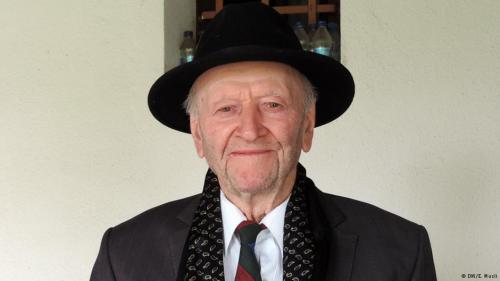
Picture by Emir Musli/Deutsche Welle
Born in 1925 in Bijeljina, to a family of land-owners and craftsmen, Idris Hujdurović grew up in a loving environment. While most Muslim families at the time privileged religious education and traditional crafts, the Hujdurović family greatly valued modern education, without disregard for their Islamic practises and traditions. Idris’ father, Mujo, made sure his children received formal, secular education. His sons attended the gymnasium, and were expected to later go to university. He wouldn’t lived to see that, though.
Mujo Hujdurović was killed by the ustasha regime in Brčko in early 1944. Just before Yugoslavia entered the Second World War, Mujo Hujdurović and his sons had built a secret shelter, where an unknown number of people, Serbs, Jews, communists or partisan sympathisers, went into hiding. When ustasha guards found the place, Mujo Hujdurović and Idris, then eighteen years old, were arrested on the spot and taken to a detention site in Brčko. On that night, with the help of other prisoners, Idris managed to escape from a tiny window; his father was executed the next day.
Idris then joined the partisans, and participated in the NOB (narodnaoslobodilačka borba), the national liberation war of Yugoslavia. As a member of the partisans, Idris was initially assigned the function of bombaš (bomber): his task was to run towards enemy positions and throw a grenade. Not many bombaši survived such tasks. In recognition for his courage, he was invited to join the Communist party, regardless of the fact that he was a practicing Muslim. After the war, Idris pursued his studies in Belgrade, and became a civil engineer, as his father wanted; in the meantime, his brother Meho, who had also joined the partisans, studied Agronomy in Zagreb. Both returned to Bijeljina, where their mother and sisters still lived, and became important agents of the post-war development of Semberija.
Idris Hujdurović found a place for himself in the communist regime, through which his energy and creativity was channeled, but he always managed to preserve his own autonomy within it. He did pay, however, a high price for the sincerity of his commitment. In 1952 he was arrested and sent to Goli Otok, where he remained until 1955. He did not side with the stalinists, but was denounced on the basis of a casual conversation in which he questioned the wisdom of entering in conflict with the Soviet Union, by saying that it wasn’t clear to him why such a conflict was necessary. He survived Goli Otok and eventually returned home to Bijeljina, and was reinstated as director of GIK-Rad, the construction company he had founded in 1948. He left his post only in 1976, pushed into early retirement, after he successfully opposed plans to refurbish the town’s centre, which included the demolition of the Atik Mosque. Even as Yugoslavia entered a stage of social and political decline after Tito’s death, until the disintegration of the state that Idris Hujdurović had helped create, despite his own experience of persecution by the regime, he remained committed to the partisan legacy.
As for Meho Hujdurović, he became the director of Semberia’s agronomical station, where he developed new species of vegetables, including a species of cabbage that became one of the main products in the region. He also educated and provided support to local farmers to develop horticulture so as to better explore the potential of the land and diminish the regional dependency on cereal production. His personal contribution to the quality of life of the peasants of Semberija cannot be overstated.
When war returned to Bosnia-Herzegovina in 1992, the Hujdurović family suffered again. Bijeljina became dominated by a climate of terror, where Bosniaks were systematically intimidated. Nationalism and greed went hand in hand, and wealthier, educated individuals were particularly at risk. Both brothers were forced to give up on their homes and other property; Meho was deported to Tuzla, and Idris was briefly arrested, then released thanks to the mobilisation of friends, after which he was forced to flee with his wife across the border to Serbia, and eventually into exile.
Idris Hujdurović returned to Bijeljina in 2004, now a widower. Already in his seventies, he actively engaged in the process of return of Bosniaks, as a member of the local association for sustainable return (Udruzenje povratak i opstanak), then led by the late Salem Čorbo. He is also a renowned bee keeper, who has developed a number of natural remedies based on honey, which he shares at no cost with anyone in need; and a farmer, who, now entering in his nineties, still maintains the large family orchard.
In the aftermath of the popular protests that, if only for a moment, shook Bosnia-Herzegovina in early 2014, Idris and Meho felt compelled to give their contribution to the quest of a a better future for their country. Their principles, life experience and education converged with the particular insights each one of them gained from living, in Meho’s case, in Tuzla, the epicentre of the revolt, part of the Federation (one of Bosnia’s entities); and Bijeljina, the second city of Republika Srpska (the other entity), where a small locally-organised protest was immediately ‘dealt with’ by thugs from the local football club, and later by the police through ‘informative conversations’.
Although they were not directly in touch with participants in the plenum process, they grasped the essential of its dynamics. Their open letter endorsed some of the plenum ideas and demands, but without the elements of populism that did much to alienate potential supporters, such as unrealistic demands with financial (spending) implications (as I witnessed myself in Sarajevo, and which were very likely part of the efforts by infiltrated agents to discredit the plena), nor any hint of the ‘yugonostalgia’ which inspired a number of plenum participants.
Assessing the political and social situation in Bosnia as critical, they called the citizens to involve themselves in the creation of plenum-like local forums, but rather than placing their faith in the mysterious mechanisms of direct democracy, which made the plena prone to infiltration and infighting, they invoked the responsibility of public intellectuals and other educated, respected figures to step up and assume task of organising and leading. Without demonising the political class, they listed a series of concrete, realistic measures, cutting on public administration and political privileges, and set specific goals to their realisation, which would result in financial savings to be reinvested in the productive sectors. Against those goals, the plenum-type assemblies should assess politicians’ work and monitor the (non)implementation of their electoral promises.
Idris and Meho Hujdurović sent this letter to all the media, which ignored them. Lacking the skills necessary to engage with the internet, they were not able to get in touch with the generation of political activists that seemed to be emerging from the ashes of the plenum process.
In May 2015, one year after the initial letter, and five months after the general elections, the Hujdurović brothers wrote a new letter, an exercise that most would consider futile, but which they felt to be both a duty and a right, as citizens, to interpelate power as well as their fellow citizens. Based on a lucid assessment of the post-election situation, the letter expands the set of proposals, to include a number of ideas for social and economic reform, so as to have a fairer distribution of jobs and revenue among the population, incentivise agricultural production and other sustainable activities The letter renews their appeal to the intellectual class to assume the role that should be theirs, but is especially directed at the younger generations, whom it exhorts to take action. Again, they were ignored.
In the meantime, I had moved out of Bijeljina, and when I come back for a visit in the Summer of 2015, čika Idris gave me the second letter, and asked me to post it online. I am sorry that only now I have found the urge to do it, caught as I was with ‘my own stuff’. When I left Bijeljina for the second time in mid-September I was feeling discouraged about the social situation in Bosnia-Herzegovina as I had never felt since I became interested in this country. Without meaning to whine about it, it took me many weeks before I was able to do any work at all for my thesis, because the sense of possibility that the Hujdurović brothers action convey was completely absent from my horizon. All I could see around me during my field visit was people who wanted to leave the country, not only because they lacked economic opportunities, but because they were exhausted of engaging with a system so morally corrupt that leaves (almost) nobody untainted.
In this context, the letters stand out even more, as an example of the future-oriented commitment towards society of two elderly men who, through the good and the bad, have preserved their sense of agency, and mobilised the best of their knowledge and energy whenever they felt they could make a difference, and even when they knew that making a difference was an unlikely outcome.
The value of these documents lies, even more than in their proposals for chance and exhortation for mobilisation, in the sense of temporality they express, which is at odds with the dominant tone of memory politics in Bosnia-Herzegovina. In their first letter, as they briefly describe the tragic legacy of the 1992-1995 war, they state
Ostavimo istoričarima nek daju ocjenu šta se to zbilo na ovim prostorima,
a mi se okrenimo našim današnjim životnim problemima.
We leave it to historians to account for what happened in this region,
and turn ourselves to the problems of our present life.
In the end of the second letter, however, they do turn to the past, to evoke the example of courage and dignity that guided them into such endeavour, as it did throughout their lives, thus showing how from a past of violence it is nevertheless possible to find resources to inspire action towards a better future, in a way that, rather than fracturing society, can work towards its cohesion:
Na kraju, osjećamo potrebu da se i predstavimo, kao autori ove analize o situaciji u BiH (…). Sinovi smo oca Muje Hujdurovića kojeg su na najgori način (iako je bio musliman), ubile fašističke vlasti u II svjetskom ratu zato što je, s nama kao djecom, štitio i branio od tadašnjih fašističkih vlasti, komšije iz čitave Semberije, pravoslavce, Jevreje i sve druge ugrožene; što je jedan od organizatora pisanja rezolucije muslimana Bijeljine i Janje i Ugljevika iz decembra 1941. godine gdje su muslimani zahtijevali suživot građana svih vjera i da vlast štiti sve građane itd; što je imao niz ličnih istupa protiv tadašnje fašističke vlasti u učinio niz humanitarnih poteza za spašavanje ugroženih građana svih vjera.
Vođeni tim idejama i ljudskim postupcima našeg oca u kritičkim vremenima II svjetskog rata osjećali smo obavezu da ovo napišemo i damo u javnost te uputimo vlastima, bez obzira kako će to ko cijeniti, a u nadi da će sve iznijeto prihvatiti prvenstveno stranake na vlasti, u cilju rješavanja problema gladnih u BiH bez obzira na njihovu vjersku i nacionalnu pripadnost i boju kože.
Translation:
To conclude, we feel the need to present ourselves as authors of these analyses of the situation in BiH (…). We are the sons of our father Mujo Hujdurović, whom during the Second World War the fascist rulers killed in the most horrible way (although he was a muslim) because, with us his children, he protected and defended from the fascist government neighbours from all of Semberia, Orthodox, Jews, and all others in danger; because he was one of the initiators of the Resolution of the Muslims of Bijeljina, Janja and Uglevik in December 1941, in which Muslims demanded the preservation of common life of citizens, and that the government (the croatian ustasha regime, which ruled over Semberia) protects all citizens; because he personally confronted the fascist government and performed a series of humanitarian gesture to rescue vulnerable citizens of all faiths.
Guided by our father’s ideals and personal actions in the critical times of the second World War, we felt it was our duty to write this and give to the public and instruct the authorities, regardless of how they will appreciate it, in the hope that the parties in power will accept it, with the goal of responding to the problems of the poor in BiH, regardless of their religion and nationality and skin colour.
I would like now to go back to the little girl, whose name I wrote on my notebook and then forgot. In my 2008 post, I concluded by saying that:
“On the children will one day rely the double responsibility to both honor the dead by protecting them from oblivion and to overcome the legacy that burdens their families.
This will not be an easy task. To be able to cope with such responsibility in the future they need to be nurtured now. It is up to today’s adults to provide them with an environment that allows them to grow into self-confident decent adults. If we achieve, these children will represesent the genociders ultimate failure.”
It has been precisely that which the Hujdurovic brothers dedicated their lives to and continue to work towards, a better future for all.
Notes: This text was prepared with full knowledge and in collaboration with Idris Hujdurović; back in 2008 the picture of the little girl was taken with full consent from her family; I sent the family paper copies of that and other pictures I took of them.

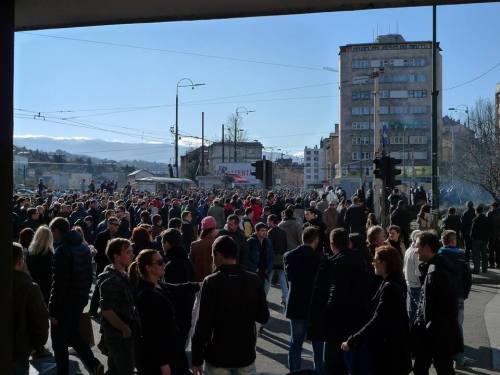
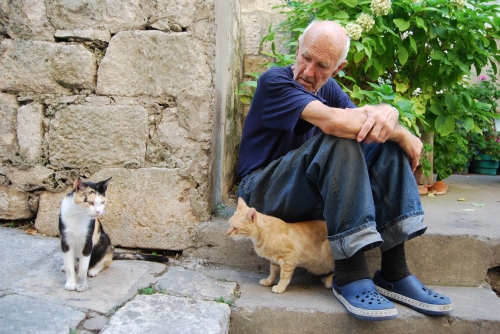

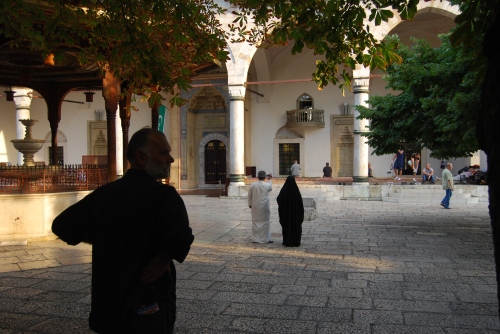
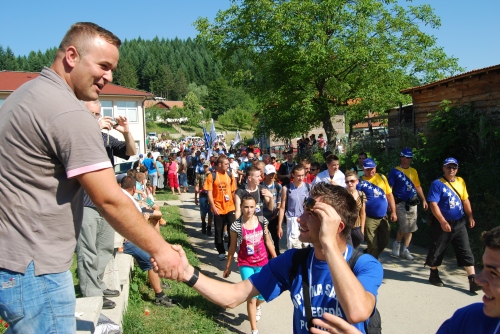

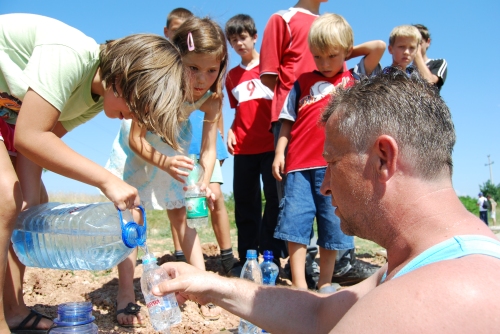

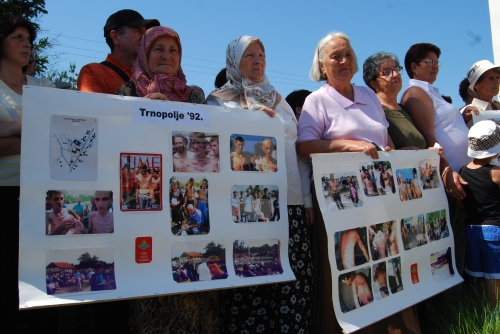


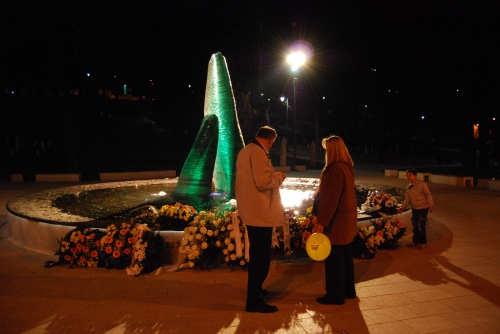
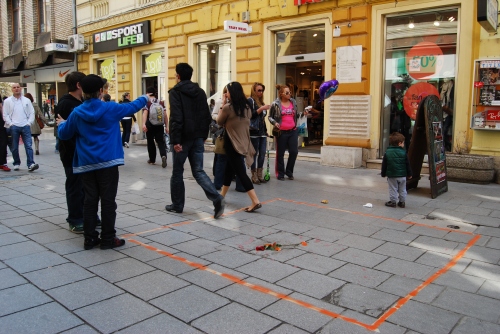
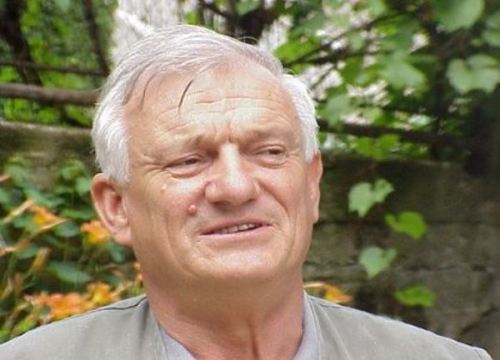
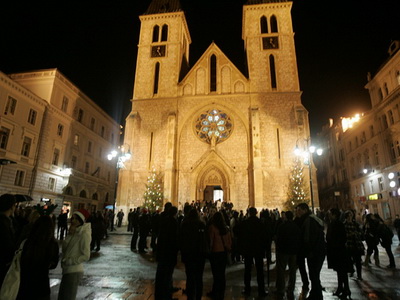
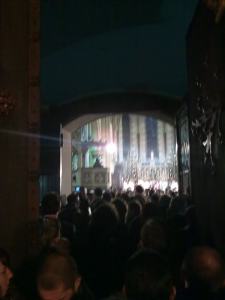
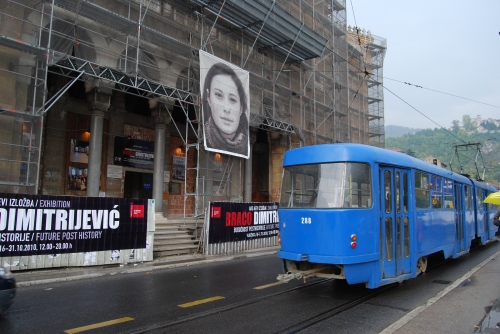

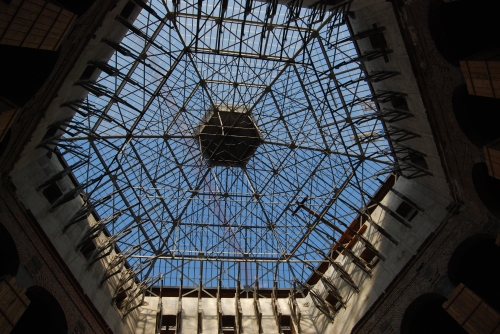

You must be logged in to post a comment.